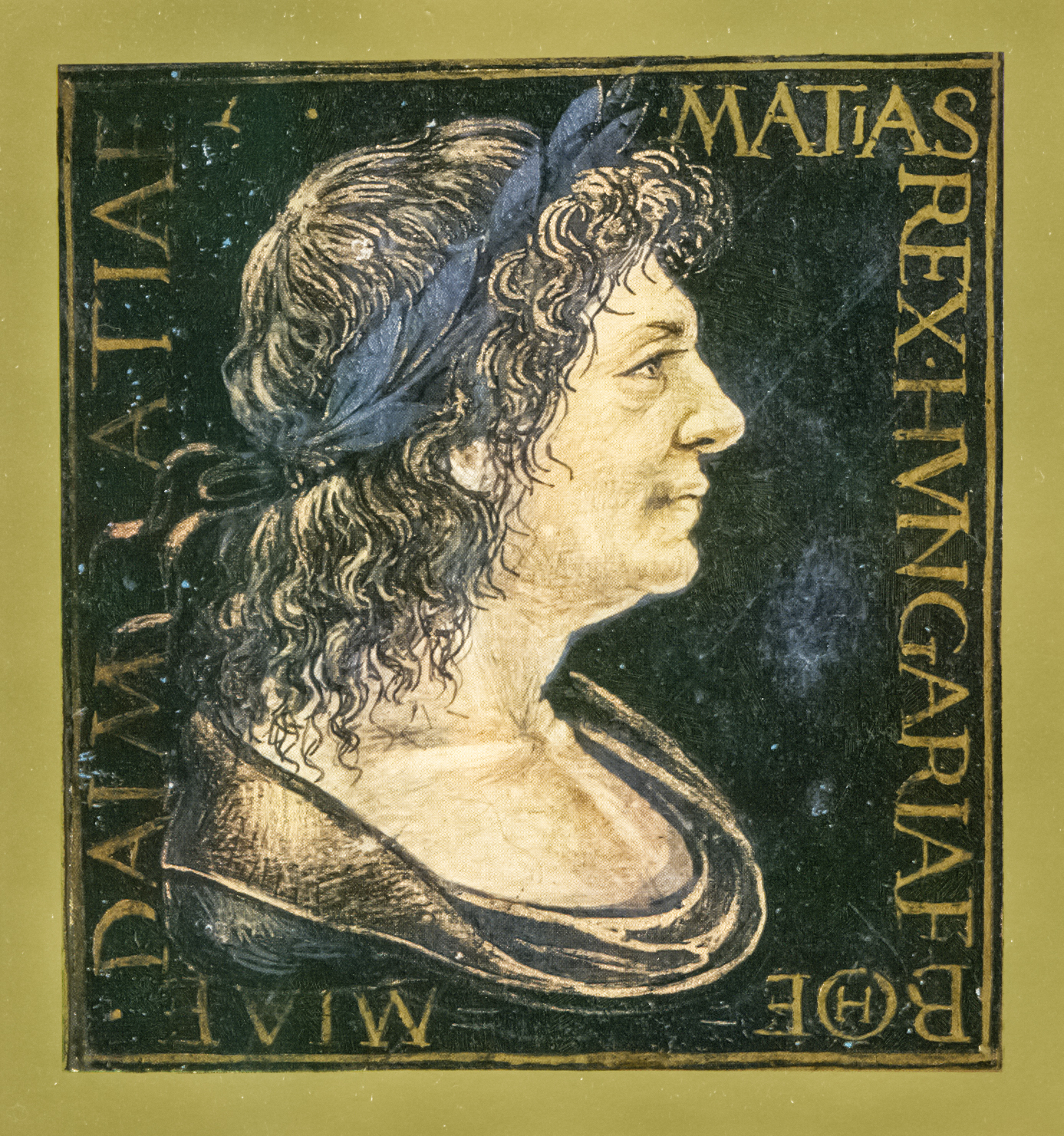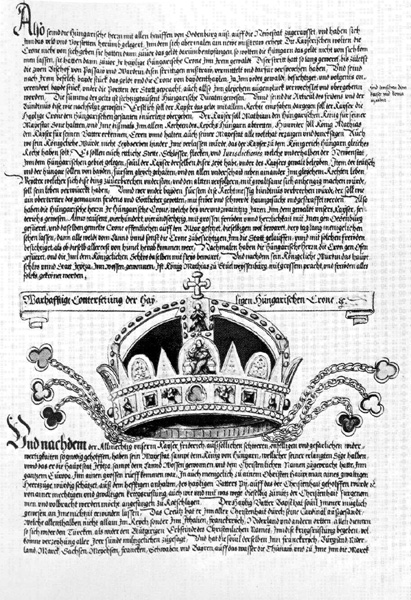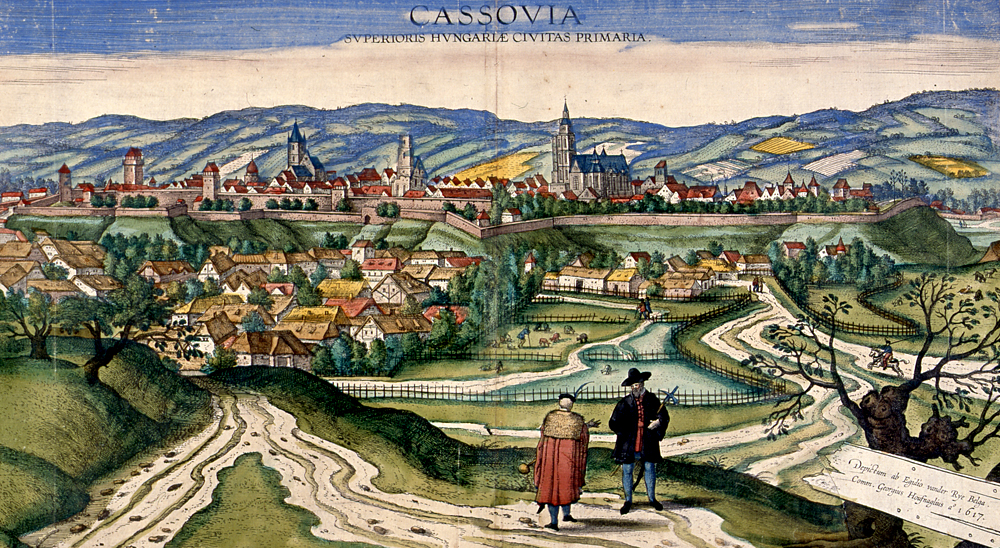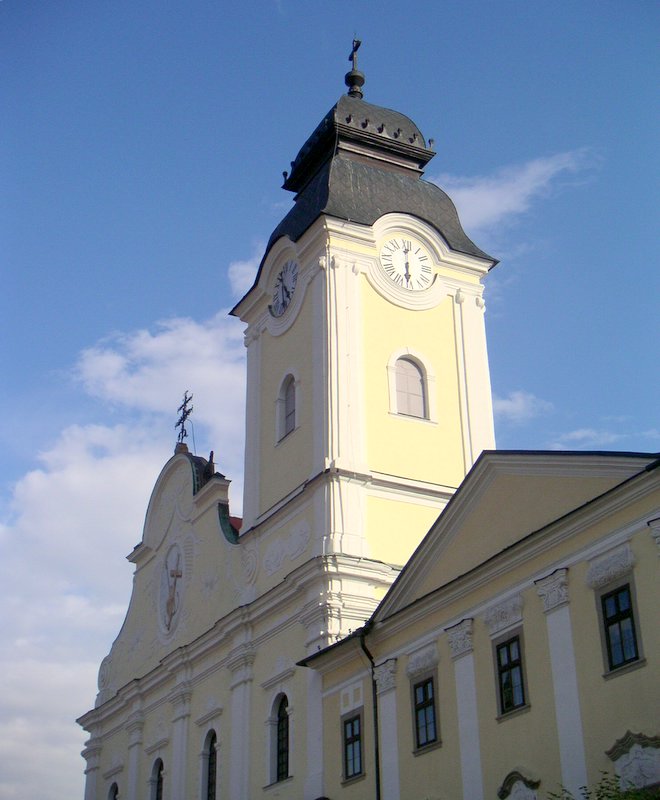|
Chief Justice Of Hungary
The chief justiceFallenbüchl 1988, p. 147. ( hu, királyi személynök,Fallenbüchl 1988, p. 107. la, personalis praesentiae regiae in judiciis locumtenens,Fallenbüchl 1988, p. 29. german: Königliche Personalis) was the personal legal representative of the King of Hungary, who issued decrees of judicial character on behalf of the monarch authenticated with the royal seal, performed national notarial activities and played an important role in the organisation of lawyers training. Later the chief justice was the head of the Royal Court of Justice ( hu, Királyi Ítélőtábla, la, Tabula Regia Iudiciaria) and the Tribunal of the Chief Justice ( hu, személynöki szék, la, sedes personalitia), the highest legal forum of civil cases. Origins The office of ''personalis'' evolved since the early 15th century within the royal chancellery. In the beginning, the king was represented by the secret chancellor in the judiciary (''judge of personal presence'').Markó 2006, p. 336. The ... [...More Info...] [...Related Items...] OR: [Wikipedia] [Google] [Baidu] |
Judge Royal
The judge royal, also justiciar,Rady 2000, p. 49. chief justiceSegeš 2002, p. 202. or Lord Chief JusticeFallenbüchl 1988, p. 145. (german: Oberster Landesrichter,Fallenbüchl 1988, p. 72. hu, országbíró,Zsoldos 2011, p. 26. sk, krajinský sudca or dvorský sudca, la, curialis comes or iudex curiae regiae), was the second-highest judge, preceded only by the palatine, in the Kingdom of Hungary between around 1127 and 1884. After 1884, the judge royal was only a symbolic function, but it was only in 1918 — with the end of Habsburgs in the Kingdom of Hungary (the kingdom continued formally until 1946) — that the function ceased officially. There remain significant problems in the translation of the title of this officer. In Latin, the title translates as 'Judge of the Royal Court', which lacks specificity. In Hungarian, he is 'Judge of the Country', with 'country' in this sense meaning 'political community', being thus broadly analogous to the German 'Land'. English has ... [...More Info...] [...Related Items...] OR: [Wikipedia] [Google] [Baidu] |
Holy Crown Of Hungary
The Holy Crown of Hungary ( hu, Szent Korona; sh, Kruna svetoga Stjepana; la, Sacra Corona; sk, Svätoštefanská koruna , la, Sacra Corona), also known as the Crown of Saint Stephen, named in honour of Saint Stephen I of Hungary, was the coronation crown used by the Kingdom of Hungary for most of its existence; kings have been crowned with it since the twelfth century. The Crown symbolized the King's authority over the Lands of the Hungarian Crown (the Carpathian Basin), and it was a key mark of legitimacy. Through the history of Hungary, more than fifty kings were crowned with it, until 1916 and the last king Charles IV. The only kings not so crowned were Wladyslaw I, John Sigismund Zápolya and Joseph II. The enamels on the crown are mainly or entirely Byzantine work, presumed to have been made in Constantinople (present-day Istanbul, Turkey) in the 1070s. The crown was presented by the Byzantine Emperor Michael VII Doukas to the King Géza I of Hungary; both are depic ... [...More Info...] [...Related Items...] OR: [Wikipedia] [Google] [Baidu] |
Thomas Drági
Thomas may refer to: People * List of people with given name Thomas * Thomas (name) * Thomas (surname) * Saint Thomas (other) * Thomas Aquinas (1225–1274) Italian Dominican friar, philosopher, and Doctor of the Church * Thomas the Apostle * Thomas (bishop of the East Angles) (fl. 640s–650s), medieval Bishop of the East Angles * Thomas (Archdeacon of Barnstaple) (fl. 1203), Archdeacon of Barnstaple * Thomas, Count of Perche (1195–1217), Count of Perche * Thomas (bishop of Finland) (1248), first known Bishop of Finland * Thomas, Earl of Mar (1330–1377), 14th-century Earl, Aberdeen, Scotland Geography Places in the United States * Thomas, Illinois * Thomas, Indiana * Thomas, Oklahoma * Thomas, Oregon * Thomas, South Dakota * Thomas, Virginia * Thomas, Washington * Thomas, West Virginia * Thomas County (other) * Thomas Township (other) Elsewhere * Thomas Glacier (Greenland) Arts, entertainment, and media * ''Thomas'' (Burton novel) 1969 ... [...More Info...] [...Related Items...] OR: [Wikipedia] [Google] [Baidu] |
Vladislaus II Of Bohemia And Hungary
Vladislaus II, also known as Vladislav, Władysław or Wladislas ( hu, II. Ulászló; 1 March 1456 – 13 March 1516), was King of Bohemia from 1471 to 1516, and King of Hungary and Croatia from 1490 to 1516. As the eldest son of Casimir IV Jagiellon, he was expected to inherit Poland and Lithuania. George of Poděbrady, the Hussite ruler of Bohemia, offered to make Vladislaus his heir in 1468. George needed Casimir IV's support against the rebellious Catholic noblemen and their ally, Matthias Corvinus, King of Hungary. The Diet of Bohemia elected Vladislaus king after George's death, but he could only rule Bohemia proper, because Matthias (whom the Catholic nobles had elected king) occupied Moravia, Silesia and both Lusatias. Vladislaus tried to reconquer the four provinces with his father's assistance, but Matthias repelled them. Vladislaus and Matthias divided the Crown of Bohemia in the Peace of Olomouc in 1479. The estates of the realm had strengthened their position during ... [...More Info...] [...Related Items...] OR: [Wikipedia] [Google] [Baidu] |
Judge Royal
The judge royal, also justiciar,Rady 2000, p. 49. chief justiceSegeš 2002, p. 202. or Lord Chief JusticeFallenbüchl 1988, p. 145. (german: Oberster Landesrichter,Fallenbüchl 1988, p. 72. hu, országbíró,Zsoldos 2011, p. 26. sk, krajinský sudca or dvorský sudca, la, curialis comes or iudex curiae regiae), was the second-highest judge, preceded only by the palatine, in the Kingdom of Hungary between around 1127 and 1884. After 1884, the judge royal was only a symbolic function, but it was only in 1918 — with the end of Habsburgs in the Kingdom of Hungary (the kingdom continued formally until 1946) — that the function ceased officially. There remain significant problems in the translation of the title of this officer. In Latin, the title translates as 'Judge of the Royal Court', which lacks specificity. In Hungarian, he is 'Judge of the Country', with 'country' in this sense meaning 'political community', being thus broadly analogous to the German 'Land'. English has ... [...More Info...] [...Related Items...] OR: [Wikipedia] [Google] [Baidu] |
Palatine Of Hungary
The Palatine of Hungary ( hu, nádor or , german: Landespalatin, la, palatinus regni Hungariae) was the highest-ranking office in the Kingdom of Hungary from the beginning of the 11th century to 1848. Initially, Palatines were representatives of the King of Hungary, monarchs, later (from 1723) the vice-regent (viceroy). In the early centuries of the kingdom, they were appointed by the king, and later (from 1608) were elected by the Diet (assembly), Diet of the Kingdom of Hungary. A Palatine's jurisdiction included only Hungary proper, in the Kingdom of Croatia-Slavonia, Kingdom of Croatia until 1918 the Ban of Croatia, ban held similar function as the highest office in the Kingdom (after the king himself), monarch's representative, commander of the royal army and viceroy (after the Croatia in union with Hungary, union of Croatia, Slavonia and Dalmatia with Hungary in 1102). Title The earliest recorded Medieval Latin form of the title was ''comes palatii'' ("count of ... [...More Info...] [...Related Items...] OR: [Wikipedia] [Google] [Baidu] |
Upper Hungary
Upper Hungary is the usual English translation of ''Felvidék'' (literally: "Upland"), the Hungarian term for the area that was historically the northern part of the Kingdom of Hungary, now mostly present-day Slovakia. The region has also been called ''Felső-Magyarország'' (literally: "Upper Hungary"; sk, Horné Uhorsko). During the Habsburg–Ottoman wars, Upper Hungary meant only the northeastern parts of the Hungarian Kingdom. The northwestern regions (present-day western and central Slovakia) belonged to ''Lower Hungary''. Sometime during the 18th or 19th century, Upper Hungary began to imply the whole northern regions of the kingdom. The population of Upper Hungary was mixed and mainly consisted of Slovaks, Hungarians, Germans, Ashkenazi Jews and Ruthenians. The first complex demographic data are from the 18th century, in which Slovaks constituted the majority population in Upper Hungary. Slovaks called this territory "''Slovensko''" (Slovakia), which term appears in w ... [...More Info...] [...Related Items...] OR: [Wikipedia] [Google] [Baidu] |
Skalica
Skalica (german: Skalitz, hu, Szakolca, Latin: ''Sakolcium'') is the largest town in Skalica District in western Slovakia in the Záhorie region. Located near the Czech border, Skalica has a population of around 15,000. Etymology The name is derived from Slovak word ''skala'' (a rock) referring to the cliffs the inhabitants built their settlement over. The first written record of Skalica was made in 1217 as ''Szacholca''. History The site has been inhabited since 4000 BC and was part of the Great Moravian Empire. From the second half of the 10th century until 1918, it was part of the Kingdom of Hungary. The settlement developed around a triangular plaza, which was rare during the Middle Ages. Its town privileges were conferred in 1372 by King Louis I of Hungary. In 1428 Skalica became a bastion for the Hussites; during the Hussite Wars, the majority of its then predominantly German-speaking populace fled or was exiled. Many Habaners (adherents of a sect similar to Anabaptism) s ... [...More Info...] [...Related Items...] OR: [Wikipedia] [Google] [Baidu] |
Sabinov
Sabinov ( la, Сibinium, hu, Kisszeben, german: Zeben, russian: Сабинов) is a small town located in the Prešov Region (north-eastern Slovakia), approximately 20 km from Prešov and 55 km from Košice. The population of Sabinov is 12,700. Etymology The name apparently comes from some shortened Slavic personal name, e.g. ''Soba'', ''Sobin'', ''Sobina'' (probably a short form of Soběslav). In Poland, there are documented personal names ''Soba'', ''Zoba'', ''Sobien'' (''Soben'' or ''Sobin''), ''Sobon'' (''Soboń'') and medieval village names ''Szebne'', ''Szobniow''. In the Czech Republic, ''Sobyn'', ''Sobień'', ''Soběn'' and medieval village names ''Sobyenow'', ''Sobíňov'', ''Soběnov''. The theory about the origin in a personal name is supported also by the common Slavic possessive suffix ''-ov'' preserved in later documents. The names ''Zob'', ''Zoba'', ''Zobas'' were used also in the Kingdom of Hungary in the 12th-13th century, but they may not be rel ... [...More Info...] [...Related Items...] OR: [Wikipedia] [Google] [Baidu] |
Levoča
Levoča (; hu, Lőcse; rue, Левоча) is a town in the Prešov Region of eastern Slovakia with a population of 14,700. The town has a historic center with a well preserved town wall, a Gothic church with the highest wooden altar in the world, carved by Master Pavol of Levoča, and many other Renaissance buildings. On 28 June 2009, Levoča was added by UNESCO to its World Heritage List. Etymology The name is of Slovak origin and belongs to the oldest recorded Slovak settlement names in Spiš. It was originally the name of the stream Lěvoča, a tributary of river Hornád (present-day Levočský potok). The name probably derived from the adjective ''lěva'' (left, a left tributary); the linguist Rudolf Krajčovič has also suggested as an origin the word ''lěvoča'' meaning "regularly flooded area". History Levoča is located in the historical region of Spiš, which was inhabited as early as the Stone Age. In the 11th century, this region was conquered and, subsequently, ... [...More Info...] [...Related Items...] OR: [Wikipedia] [Google] [Baidu] |
Esztergom
Esztergom ( ; german: Gran; la, Solva or ; sk, Ostrihom, known by alternative names) is a city with county rights in northern Hungary, northwest of the capital Budapest. It lies in Komárom-Esztergom County, on the right bank of the river Danube, which forms the border with Slovakia there. Esztergom was the capital of Hungary from the 10th until the mid-13th century when King Béla IV of Hungary moved the royal seat to Buda. Esztergom is the seat of the ''prímás'' (see Primate) of the Roman Catholic Church in Hungary, and the former seat of the Constitutional Court of Hungary. The city has a Christian Museum with the largest ecclesiastical collection in Hungary. Its cathedral, Esztergom Basilica, is the largest church in Hungary. Toponym The Roman town was called ''Solva''. The medieval Latin name was ''Strigonium''. The first early medieval mention is "''ſtrigonensis trigonensiscomes''" (1079-1080). The first interpretation of the name was suggested by Antonio ... [...More Info...] [...Related Items...] OR: [Wikipedia] [Google] [Baidu] |







